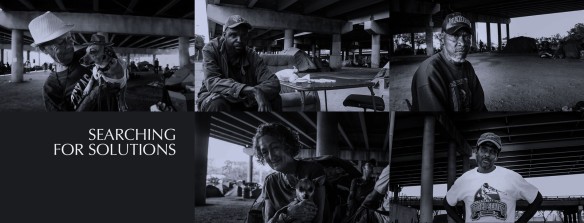It’s been awhile between posts. This has been a hard post for me to write. Mainly, I’ve had to get over a near overwhelming sense of indignation, an effort to find a way to write this in a way that does not betray that anger, but rather some sense of concern for the direction of this country.
I didn’t want to write anything else, until I figured this out. I hope I accomplished this aim. I will admit, it’s short on answers, but the answers are really the same ones that we’ve heard all along: whites and people coming together around the things that we have in common – even mutual pain.
While there’s much about which to write aside from the war of words between the Republican and Democratic nominees, I’ve wanted this blog from its inception, to promote meaningful dialogue. I hope its done this. And I want to try and avoid knee jerk political punditry. Politics actually does matter. Policy does matter. And I think that even in this very odd season, we can get around the partisanship and ask policy questions that matter to us and the people we care about.
One of the issues that has had me thinking and rethinking about how to view this election, is, of course poverty and for whom should the poor cast their vote?
Interestingly enough, while it appears by the polls, poor minorities will overwhelmingly vote for Hillary Clinton. Donald Trump’s recent refrain when making his appeal to the black electorate is ‘What do you have to lose?’ And bases this question on how the cities run by the Democratic Party haven’t made that much of a difference in their lives. Leaving aside, for this post, the fact that many, if not most, of our poor urban cities – particularly in the south – happen to be in red states, or the absence of specifics by which Trump intends to make the lives of poor black citizens appreciably better, there is a very interesting irony, regarding Trumps base voters. Trump’s base, is primarily described white men, with a high school diploma or less, from communities suffering from high unemployment and the correlating poverty and the nihilistic attitudes that are the pathology of such neighborhoods: drug abuse, alcoholism, rising mortality rates and subsequent fears that their children’s future is no longer as bright as the American Dream once promised.
In other words, the same issues that have plagued black communities for decades!
Don’t take my word for it. The same question is the subject of several articles in the Atlantic Monthly. Look at some of the titles, The Despair of Poor White Americans: The Original Underclass, All Hollowed Out: The Lonely Poverty of the White Working Class, Who are Donald Trump’s Supporters, Really?
And this passage from ‘The Despair of Poor White Americans…’
“Today, less privileged white Americans are considered to be in crisis, and the language of sociologists and pathologists predominates. Charles Murray’s Coming Apart: The State of White America, 1960–2010 was published in 2012, and Robert D. Putnam’s Our Kids: The American Dream in Crisis came out last year. From opposite ends of the ideological spectrum, they made the case that social breakdown among low-income whites was starting to mimic trends that had begun decades earlier among African Americans: Rates of out-of-wedlock births and male joblessness were rising sharply. Then came the stories about a surge in opiate addiction among white Americans, alongside shocking reports of rising mortality rates (including by suicide) among middle-aged whites. And then, of course, came the 2016 presidential campaign. The question was suddenly no longer why Democrats struggled to appeal to regular Americans. It was why so many regular Americans were drawn to a man like Donald Trump.”
It is interesting that the exportation of jobs and decent education and the importation of jobs and crime in these poor white communities, mirror the same impact of the same policy driven woes in the black community.
William Julius Wilson, a brilliant African-American sociologist, has outlined the process which has caused so economic suffering in our black urban centers suffer, many years ago.
In his classic work, ‘When Work Disappears’, Wilson talks about the decline of manufacturing jobs, formerly located within the urban core. Jobs which offered good wages, upward mobility within the industry and economic stability for workers. These were jobs that required a high school education and relatively low skills, with the ability of learn.
With the loss of manufacturing jobs came service industry jobs. They required little education or experience. They provided opportunity primarily for women. They were referred to as ‘pink collar’ jobs. With the internationalization of these low skill, low wage jobs, came the flight of manufacturing jobs to foreign countries where low skill, non-unionized labor was prevalent. The collateral damage? Male workers. Both white and black, but for black men, bearing the burden of racism, it was particularly devastating. The results? Hopelessness, negative feelings. Boys head to the streets. Social isolation. Social networks fall apart. Marriages fall apart. Out of wed births increase. Increased drug dealing and drug addiction. And the spiral continues.
Yet, here’s the thing: when these things were happening for decades in the black community, the cry from the white community was, ‘Pull yourself up by your bootstraps’. The same things were happening undercover in the white community and now its a major crisis in our politics and our society. Now, this pathology calls for a champion to correct it…Donald Trump.
Still it’s not just poor white communities dealing with the pathologies that have impacting our urban centers for decades. Even wealthier white suburbs are dealing with an epidemic of our failure to win the war on drugs. In a riveting episode on the subject 60 Minutes, deals with how an area of the rust belt, has been impacted by drugs. Read the conclusion of that episode with one of the mothers whose family has been devastated by the problem…
“Bill Whitaker: I’m sure there are some who would be watching this and would say, “Heroin addicts are junkies and they brought this on themselves, so why should we care?”
“Tracy Morrison: Because we don’t throw diabetics who sit on the couch eating Bon Bons and smoke and they weigh 300 pounds in prison. We don’t belittle them and there’s not a big stigma; we don’t do that to people that chain smoke and develop lung cancer. It’s a chronic relapsing brain disease, period, amen, end of story and we need to accept it– even if it makes people uncomfortable. And if people don’t like that, I’m sorry.”
It is what many black families have been saying for decades…
Reflecting on the state of affairs in these two all too American communities, challenges me with another thought: why aren’t we working together…indeed fighting together…to bring about the policy changes that can impact our future and those of our children. Of course the most obvious reason is we’ve all had a game played on us. As black Americans, we see racism as a predominant cause – almost to a fault. And while racism is either a result of or cause of much of the divide, poor whites, particularly those suffering from those same pathologies that have impacted black communities for decades, comfort themselves in a threadbare cloak of superiority believing that the pigment of their skin keeps them of society’s bottom rung. In the meantime, there’s a predominant class making off with the goods!
Do we need a new politics? You bet. Do we need more accountability? Right again. Do we need to have better people engaged in our politics and a more informed electorate? Absolutely. All of which will take time and a movement that has more integrity, creativity and political power than we see currently. But whether out of our mutual pain, or politics, or sense of survival, we must come together…before its too late!

 I wasn’t at Dallas’ City Council briefing yesterday, when the Dallas Homeless Commission gave them the results of our study compiled over the summer. Believe it or not, I was in meetings, trying to build support for a new permanent supportive housing initiative! So, I was relegated to news reports.
I wasn’t at Dallas’ City Council briefing yesterday, when the Dallas Homeless Commission gave them the results of our study compiled over the summer. Believe it or not, I was in meetings, trying to build support for a new permanent supportive housing initiative! So, I was relegated to news reports.